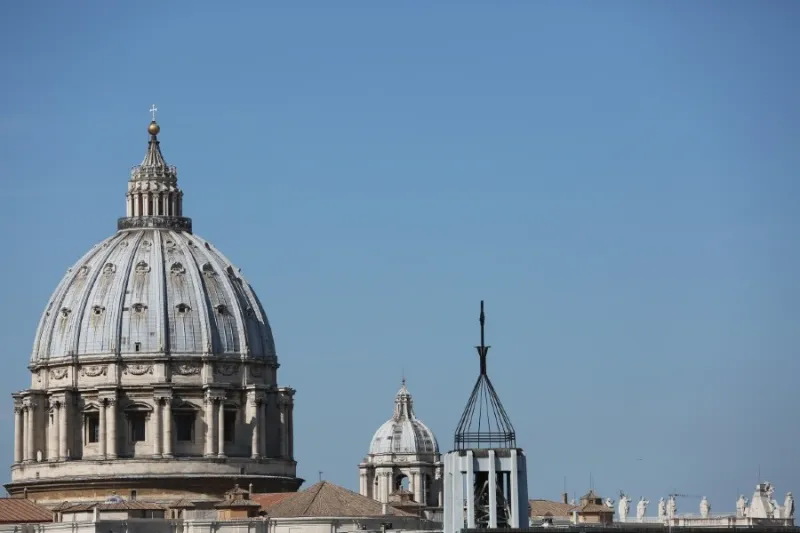
Washington D.C., Jun 29, 2021 / 16:01 pm (CNA).
Some Canadian bishops, along with Indigenous leaders, will meet with Pope Francis at the Vatican in December 2021, according to the Canadian bishops’ conference.
The delegations of a “small” group of Canadian bishops, along with Indigenous First Nations, Inuit, and Métis leaders, will be scheduled for papal meetings at the Vatican from Dec. 17-20, 2021, “to foster meaningful encounters of dialogue and healing,” the Canadian bishops’ conference stated on Tuesday.
Pope Francis is inviting each group of Indigenous delegations – First Nations, Métis and Inuit – to a distinct meeting, the bishops said, praising “the Holy Father’s spirit of openness.”
First Nations communities are Indigenous peoples who lived south of the Arctic region in modern-day Canada, while Inuit peoples resided in the Arctic region. Métis communities share both Indigenous and European heritage.
All delegations will share a final audience with Pope Francis on Dec. 20. They will include Indigenous elders, residential school survivors, youth, and a small group of Bishops and Indigenous leaders,” the bishops’ conference said.
“Pope Francis is deeply committed to hearing directly from Indigenous Peoples, expressing his heartfelt closeness, addressing the impact of colonization and the role of the Church in the residential school system, in the hopes of responding to the suffering of Indigenous Peoples and the ongoing effects of intergenerational trauma,” the Canadian bishops’ conference announced in the statement.
“The Bishops of Canada reaffirm their sincere hope that these forthcoming encounters will lead to a shared future of peace and harmony between Indigenous Peoples and the Catholic Church in Canada,” they wrote.
The announcement comes after the recent discovery of unmarked graves of 215 Indigenous children at a former Catholic-run residential school in British Columbia.
That discovery on the weekend of May 22 prompted leaders of the Assembly of First Nations and the Métis National Council to plan a visit to the Vatican, with the Canadian Conference of Catholic Bishops (CCCB), to request a formal papal apology for the Church’s role in the residential school system.
At his June 6 Sunday angelus, Pope Francis expressed “sympathy” over the discovery of children’s remains, urged healing and reconciliation, and called for a “turn away from the colonizing model,” but he did not issue a formal apology. Other Canadian bishops have apologized for the Church’s role in the residential school system, including the bishops of Alberta in 2014 and, recently, the archbishops of Vancouver and Ottawa.
The residential school system was set up by the Canadian federal government, beginning in the 1870s, as a means of forcibly assimilating Indigenous children and stripping them of familial and cultural ties. Catholics and members of other Christian denominations ran the schools, although the Catholic Church or Catholics oversaw more than two-thirds of the schools. The last remaining federally-run residential school closed in 1996.
According to the Truth and Reconciliation Commission, a Canadian body set up to investigate abuses in the schools, at least 4,100 children died from “disease or accident” at the schools. One of the commission’s calls was for a formal papal apology for the Church’s role in the residential school system.
At the site of the former Kamloops Indian Residential School in British Columbia, the remains of 215 Indigenous children were discovered on the weekend of May 22 with ground-penetrating radar. It is unclear when or how the children died.
On June 24, Cowesses First Nation leaders announced that 751 unmarked graves had been discovered at the site of the former Marieval Indian Residential School.
One scholar who worked with the Truth and Reconciliation Commission issued a report following the Kamloops discovery, explaining that the schools were historically underfunded and under-regulated by the federal government. More work is needed to accurately document the location of residential school cemeteries amid the recent discovery of unmarked graves, he wrote.
Dr. Scott Hamilton, a professor in the Department of Anthropology at Lakehead University in Thunder Bay, wrote that the federal government for decades did not establish or implement proper health care and cemetery care regulations at the schools.
In at least some cases, the government had a policy of only paying for deceased residential school students to be transported home for funerals when the cost of transportation was less than the cost of a burial at a residential school, he noted. When the government took control of residential schools from religious groups in the late-20th century, cemeteries and burial grounds were not adequately documented.
As a result, the locations of many cemeteries could fade from memory over time due to lack of regulation and documentation, Hamilton said, and individual grave markers could have been moved or succumbed to the elements.
If you value the news and views Catholic World Report provides, please consider donating to support our efforts. Your contribution will help us continue to make CWR available to all readers worldwide for free, without a subscription. Thank you for your generosity!
Click here for more information on donating to CWR. Click here to sign up for our newsletter.




Leave a Reply